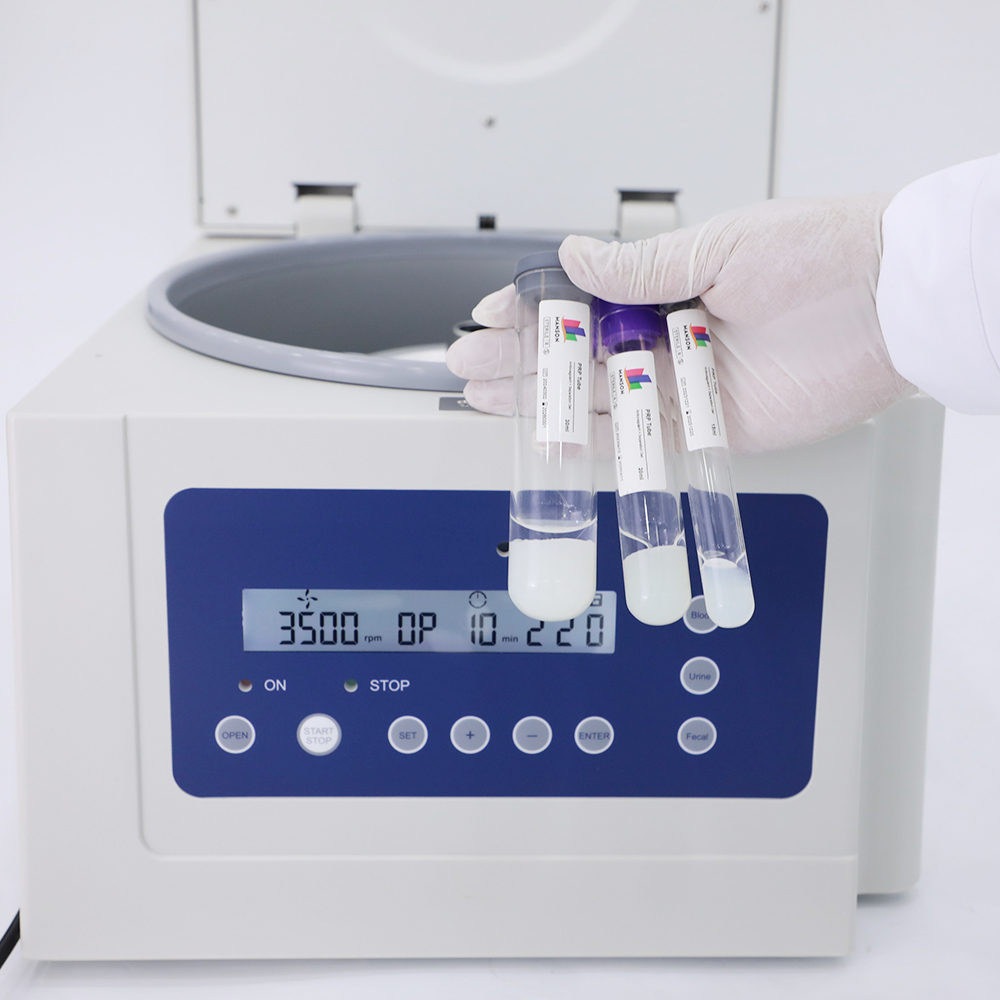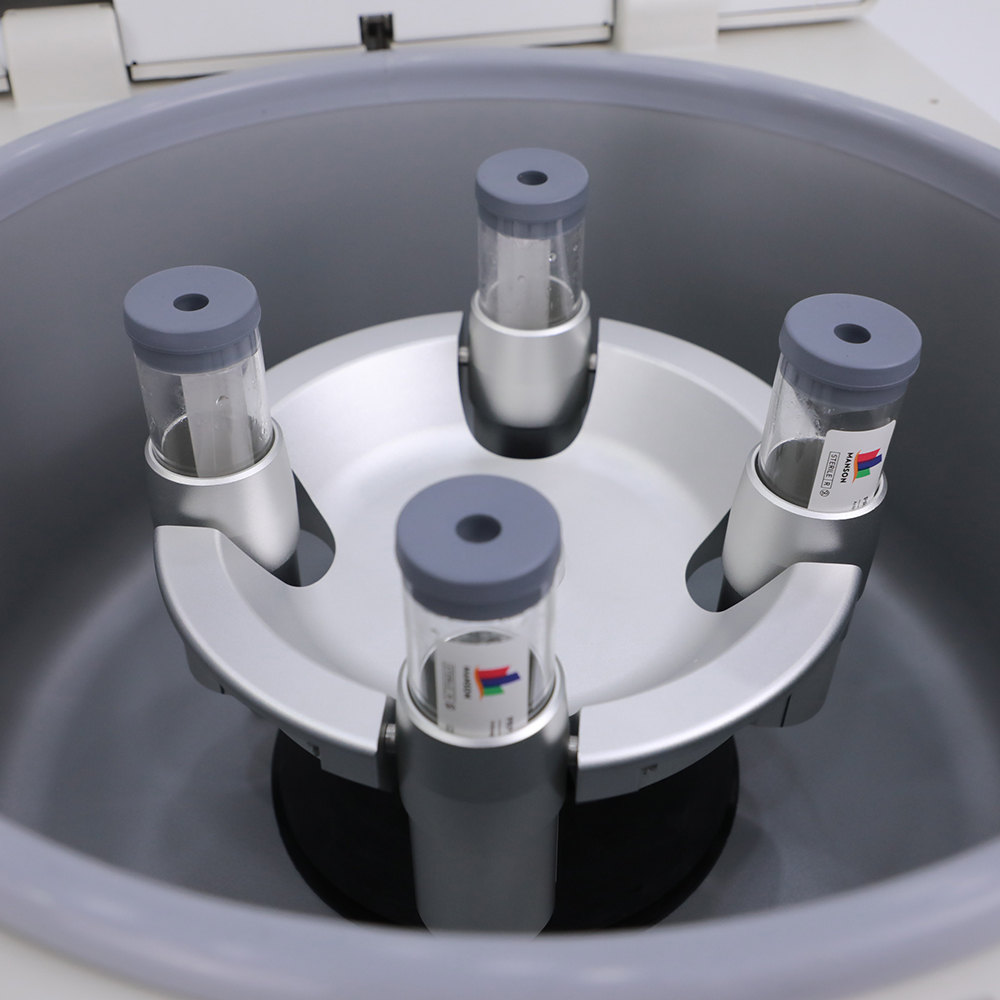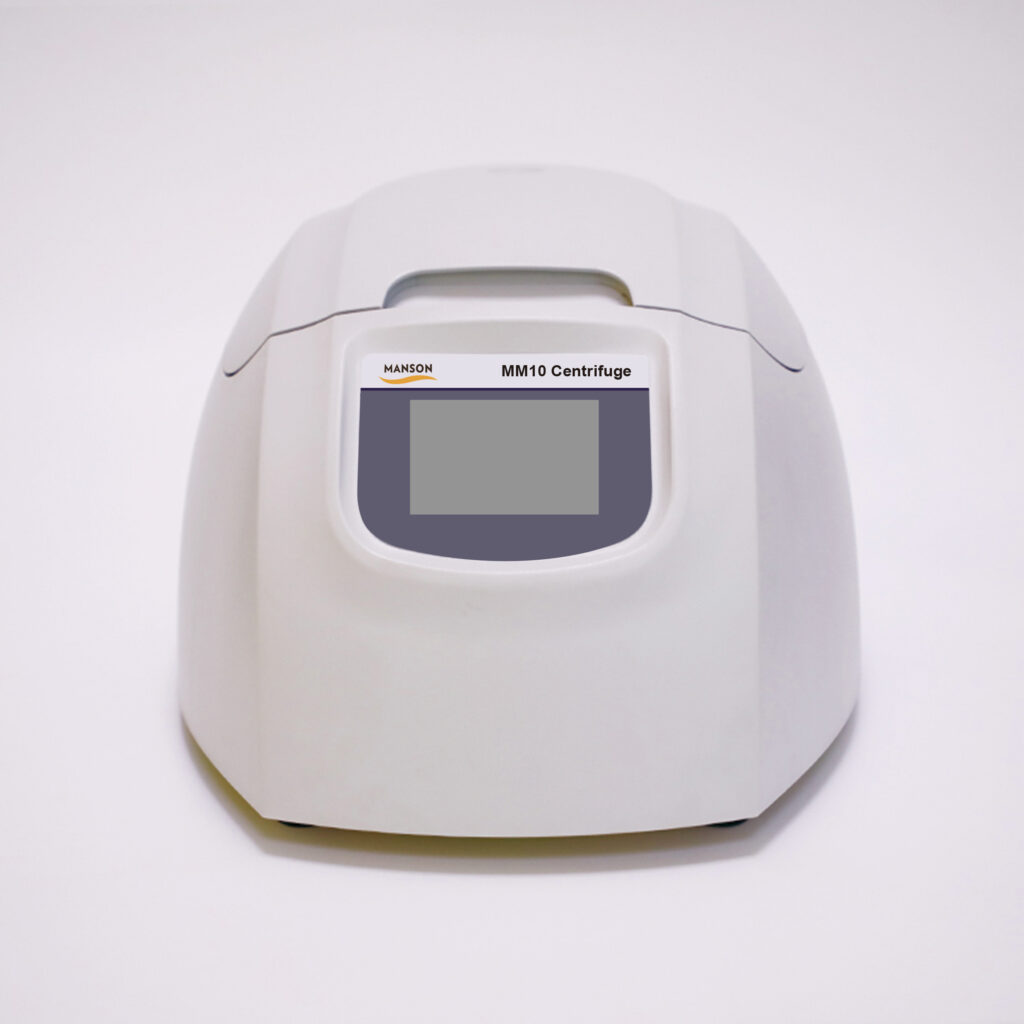PRP Centrifuge: for Flawless Regenerative Therapies
The Definitive Guide to PRP Centrifuges: Protocols, Settings, and Expert Recommendations
Platelet-Rich Plasma (PRP) and Platelet-Rich Fibrin (PRF) therapies are revolutionizing regenerative medicine, offering solutions for hair restoration, joint repair, and skin rejuvenation. At the heart of these treatments lies the PRP centrifuge—a critical device that separates and concentrates platelets from blood. This guide dives deep into centrifugation protocols, equipment selection, and best practices to maximize therapeutic outcomes.

How Long to Centrifuge Blood for PRP?
Centrifugation time depends on the protocol (single vs. double spin) and the desired platelet concentration:
Single Spin: 5–15 minutes at 100–300g for initial separation of red blood cells (RBCs) and plasma.
Double Spin:
First Spin: 100–300g for 5–10 minutes to separate RBCs.
Second Spin: 400–700g for 10–17 minutes to concentrate platelets.
Studies show double-spin protocols yield 5–9x platelet concentration compared to baseline, while single spins achieve only 3–5×18. For PRP gel or fibrin-rich applications, shorter spins (e.g., 8 minutes at 700g) prevent fibrin aggregation.
What Is the Best Centrifuge for PRP?
The ideal PRP centrifuge balances speed, rotor type, and compatibility with clinical workflows:
1. Horizontal (Swing-Out) Centrifuges
Advantages:
Gentle separation minimizes platelet damage.
Higher platelet recovery (up to 90%) compared to fixed-angle models.
Top Models:
Eppendorf 5702: Validated for PRF protocols (700g for 8 minutes).
Hermle Z206A: Ideal for open-method PRP with customizable settings.
2. Fixed-Angle Centrifuges
Use Case: High-throughput clinics needing compact designs.
Example: RegenOMedix ZG-TD4B-01
Speed: Up to 5,000 RPM (2,637g).
Features: Preprogrammed PRP/PRF protocols and cold-room compatibility.
3. Closed-System Kits
Manson MM9: FDA-cleared system with automated platelet recovery (90% efficiency).

Manson PRP Tubes: Glass tubes with ACD-A anticoagulant for high platelet yields.
Centrifuge Speed and Time for PRF
PRF (Platelet-Rich Fibrin) requires no anticoagulants, relying on natural clotting. Optimal protocols include:
Solid PRF (L-PRF/A-PRF): 700g for 8 minutes in horizontal centrifuges to evenly distribute platelets and leukocytes.
Liquid PRF (i-PRF): 200–400g for 3–5 minutes for injectable formulations.
Horizontal centrifuges outperform fixed-angle models by 3.5x in platelet/leukocyte concentration due to reduced cell trauma.

How to Choose a Centrifuge Speed
Speed selection hinges on three factors:
Blood Components Required:
Lower speeds (100–300g) preserve leukocytes for inflammation-heavy treatments.
Higher speeds (400–700g) maximize platelet concentration for hair or skin therapies.
Tube Material:
Glass tubes tolerate higher speeds without static interference.
Anticoagulant Type:
ACD-A tubes require slower spins (100–160g) to avoid platelet activation.
Standard Centrifugation Times by Application
Application Speed (g) Time Protocol
PRP (Double Spin) 100→400g 5 + 15 minutes Hair, joints
PRP (Single Spin) 200–300g 10 minutes Dermatology
PRF (Solid) 700g 8 minutes Dental surgery
Plasma Preparation 1,000–2,000g 10 minutes Standard labs
Blood Centrifugation Speed for PRP vs. Plasma
Plasma Separation: 1,000–2,000g for 10 minutes to remove RBCs.
PRP Preparation: Lower speeds (100–700g) to avoid pelleting platelets with RBCs.
Key Considerations for PRP Centrifuge Settings
Temperature:
Room temperature (20–24°C) preserves platelet integrity.
Avoid refrigeration unless storing PRP >8 hours.
RPM vs. RCF:
Relative Centrifugal Force (RCF) is more accurate than RPM for protocol consistency.
Tube Compatibility:
Use 10–15 mL tubes with ACD-A anticoagulant for optimal platelet recovery.
FAQs: PRP Centrifuge Optimization
Can I reuse PRP tubes?
No—single-use tubes prevent contamination.
How much blood is needed per session?
20–60 mL (2–4 tubes) for 5–15 mL PRP.
Do leukocytes affect PRP quality?
Leukocyte-rich PRP (LR-PRP) suits orthopedic repairs, while pure PRP (P-PRP) is better for aesthetics.

Conclusion
A PRP centrifuge is the linchpin of successful regenerative therapies. By tailoring speed, time, and equipment to your clinical needs—whether for PRP’s rapid growth factor release or PRF’s sustained fibrin matrix—you can achieve reproducible, high-yield results. Prioritize horizontal centrifuges for delicate separations and closed systems for contamination-free workflows.
Ready to Elevate Your PRP Outcomes? Invest in a certified PRP centrifuge today and unlock the full potential of.

